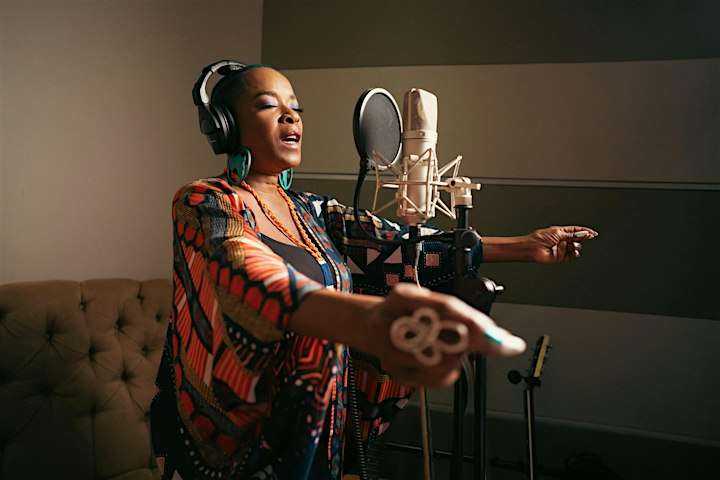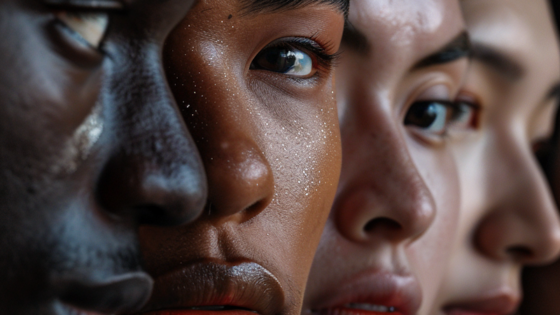on
BY SIMONE J. SMITH
“One Love! One Heart! Let’s get together and feel all right.”
These words from the Legend’s iconic song ‘One Love’ became an anthem for peace and unity. It doesn’t matter where you go in this world, Bob Marley’s music transcended genres and borders, resonating with people from all walks of life. Marley’s influence extends far beyond his music. His commitment to social and political activism made him a symbol of resistance and empowerment.
Bob Marley’s legacy lives on through his timeless lyrics, which continue to inspire and motivate generations. His music is a powerful force that continues to foster a sense of community and encourage positive change. His impact isn’t confined to his lifetime. His music is a bridge that connects people across cultural, racial, and social divides. It’s a reminder that, no matter where we come from, we can find common ground through the power of music.
I have a shocking surprise for everyone, one that will be a historical moment here in Toronto, and if you are a Bob Marley fan, you will not want to miss it. Humanity Ova Vanity (H.O.V) is honored and excited to have the opportunity to curate an activation celebrating Bob Marley’s 79th Earth Day with members of the Marley family for the first time in the history of the City of Toronto!
On Tuesday February 6th, 2024 (at Don on Danforth) with the support of the OCS and the Don Arts Academy, you are invited to spend a few hours immersed in the: world, sounds, culture, reasonings and higher vibrations that inspired Bob Marley. This will be an inclusive experience with delicious Ital food and juices, art installations inspired by Bob’s daily life. There will be musical tributes, and an intimate conversation with international recording artist and Grammy winner Sharon Marley as she remembers her father: beyond the stage, his values and pet peeves, his favourite things to do at home, family memories and so much more.
Sharon Marley is a dynamic and multi-faceted artist, Montessori educator, mother and child advocate who forms 1/4 of the three-time Grammy winning group Ziggy Marley & the Melody Makers. Her first full length album is slated for release in 2024.
Her daughter, Donisha Prendergast, is an: actress, writer-director, producer and cultural curator. Her body of work includes lead performances in award winning films: Akilla’s Escape, Black Bodies, Awaking Sankofa, and RasTa; A Soul’s Journey where she ventures to eight countries around the world to learn about the roots and evolution of Rastafari.
She is also the founder of Humanity Ova Vanity, a non- profit focused on curating activations that bridge the gap between industry, culture, art and the act of come-unity.
I had an opportunity to speak with one of the organizers, the magnificent Michelle Linares, and she gave me the 411 on what guests have to expect on February the 6th.
“We are honoured to have the Ontario Cannabis Store as one of our sponsors; we have worked with them before, and when they heard about what we were going to do, they were more than happy to be a part of it. We are also happy to be partnering with Her Black Garden, a collective of females that work in the cannabis industry. We are going to bring something different to this celebration; trust me when I say that this is history in the making.”
Even with her busy schedule, Bob Marley’s granddaughter Donisha took some time to speak with the Toronto Caribbean Newspaper about how exciting it was going to be facilitating this event in Toronto. “It is important to create the space to overstand the work that is being done,” Donisha begins. “Humanity over Vanity is now that structure. It is sustainable. I have wanted to start a non-profit, but I didn’t want to have a registered structure. As I matured, I came to realize that in order to get certain things done, you have to use wisdom. Everything now is done with purpose.”
“What has motivated you to focus on the specific issues and causes that you are currently addressing in the community,” I queried?
“This work is not strange to me. I have been building alternative curriculums for the last decade. We want to work with artists to help them connect with the community so that they have sustainable impact. Art has the potential.”
“In what ways has collaboration with other individuals, or organizations maximized the impact of your community work?”
“Iron sharpens iron. I have always been into collaboration, because we don’t live in a void. Being able to collaborate about beautiful, passionate women is incredible. The expertise and insight Michelle brings in connecting with the community; I submitted to the process because it was part of the process.”
I had to agree with her there; when the universe connects you with the right people; great things occur. I was curious if Donisha had faced any criticism, or skepticism regarding her community work, and how she responded to these challenges.
“People are like, Donisha, exactly what do you do?’ She said laughing. Sometimes I don’t even know what I am doing. ‘Jack of all trades, master of none, but oftentimes better than a master of one.’ Most people leave the ending part out of this popular statement. Being versatile and having diverse skills can be valuable, even if one is not a master in a specific field. People don’t understand because I do so many things.
I am an artist and do community development work. It is hard to do both, but I have been able to incorporate my artistry into my community work. At times, it can be challenging.
Time away from family; this is the biggest challenge. My first year as a mother, I had to help a friend get her two children back from CPS. I left Canada and went to America and was stuck there for eight months. When I became a mother, I wanted to step away from community work, but this issue impacted me, and my family.
You can make an impact in the world. We want individuals to connect with the community, and we want corporations to see this pattern. We want nation building to become a culture. Can the philosophies that have been instilled in me be shared with the world? Most definitely!”
“Finally, Donisha, what can guests expect from the One Love in Action event?”
“It is going to be a beautiful night spent with members of the Marley family. It will be complemented with Ital food, and natural juices. As we celebrate his life, let’s remember the man who turned his guitar into a weapon of peace and left an indelible mark on the world.”
Community, lucky for you, I have the all the details for this historical week coming up:
Tuesday, February 6th BOB MARLEY 79th EARTH DAY
6:30PM – 10PM at Don on the Danforth
Tickets can be found at (https://www.eventbrite.ca/e/one-love-in-action-celebrating-bob-marleys-79th-earthday-registration-790713303777?aff=oddtdtcreator)
Thursday, February 8th, 2024
One Love – Private Screening Invite Only at Tiff Bell LightBox.
Friday, February 9th, 2024
1:00 PM-3:00 PM (Visit with Toronto South Detention Center)
7:30 PM – 8:30 PM (Sharon Marley Live at the AGO)
Saturday, February 10th, 2024 (BOB & RITA’S WEDDING ANNIVERSARY)
2:00 PM – 4:00 PM – RasTa, A Soul’s Journey documentary screening with Donisha Prendergast
Sunday, February 11th, 2024
8:00 PM – 2:00 AM at Don on the Danforth
Simmer Down Sundaze with DJs Spex da Boss, Brigadier Shazbad, and Special guests DJ Shacia Payne and DJ Zuri Marley with Live performances by King Cruff, Bam Marley and Mystic Marley
MONDAY, FEBRUARY 12th, ONE LOVE MOMENT
“Protecting ME” A visit to Abiona Center with Donisha Prendergast, Shacia Payne, Mystic Marley & Zuri Marley.
6:00 PM – 8:00 PM Bob Marley One Love Movie – Come-Unity Screening & Talk back with the next generation of Marley family members.
Stay in the loop with exclusive news, stories, and insights—delivered straight to your inbox. No fluff, just real content that matters. Sign up today!












